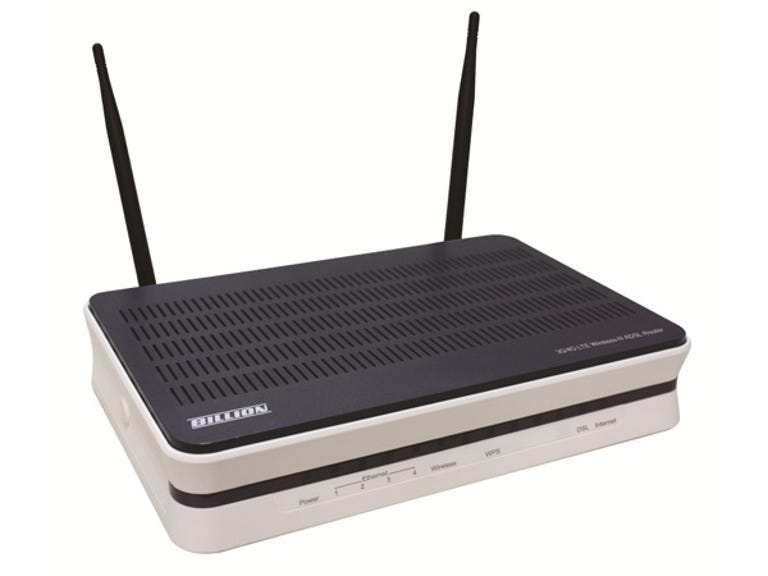 Why You Can Trust CNET
Why You Can Trust CNET Billion BiPAC 7800NXL review: Billion BiPAC 7800NXL
Considering it also includes an ADSL2+ modem, Billion has delivered an impressive range of features at an even more impressive price point. But it's for experts only.
Billion might not have the designer packaging or multimillion-dollar advertising campaigns of Netgear and Western Digital, but this Taiwanese brand has built a strong following amongst Aussie geeks since landing down under back in 2002. Word of mouth is a great way to spread the love, and Billion has the hardcore tech audience talking, thanks to its unique range of routers. As you'll see with our review of the new BiPAC 7800NXL, the company delivers excellent value for money while retaining an extensive feature list. Unfortunately for network novices, this comes at the cost of ease of use, with Billion's user interfaces looking like something out of NASA's mission control.
The Good
The Bad
The Bottom Line
Specs at a glance
| Firmware tested | 2.23 |
|---|---|
| ADSL2+ modem | Yes |
| Annex M | Yes |
| 3G modem | Supported via USB |
| IPv6 | Yes |
| NBN ready? | Yes |
| Wireless protocols | 802.11b/g/n |
| Dual band | No |
| Highest wireless security | WPA2 |
| WDS | Yes |
| Ethernet ports | 3x gigabit LAN, 1x gigabit WAN |
| USB print sharing/storage | 1x for storage or printer |
| Accessories | ADSL filter, Ethernet cable, power supply, driver disk |
Connections
The 7800NXL is housed in a very plain plastic case, lacking the designer aesthetics that more expensive brands favour. Twin removable antennas are included, which screw onto the rear of the box alongside three gigabit Ethernet ports, plus a single WAN port. There's also a solitary USB port on the rear, ready to share a printer or external drive to network users. This port also doubles as the home for a 3G/4G USB dongle, though most users will probably use the integrated ADSL2+ modem instead. We tested the modem over a standard Internode ADSL2+ connection, where it reached a top speed of 18Mbps — the maximum speed we've ever seen this line hit. No matter which form of National Broadband Network (NBN) arrives, the 7800NXL is ready to make the most of it with dual WAN connectivity, accessed via the single Gigabit Ethernet WAN port. This can handle both fibre to the node (FttN) as well as fibre to the home (FttH).
UI and features
Heading into the user interface via Chrome, Billion's minimal, technical design is in stark contrast to most other home networking routers. Even the Wi-Fi settings screen is filled with dozens of options, an exponential increase on the handful offered elsewhere. It's not just that the interface lacks any form of help system; it's also that it uses the most technical terms for fields that usually have more recognisable labels.
Billion expects the user to understand every field and value, and too bad if they don't. Even something as simple as forwarding a port, a common feature that gamers use to allow multiplayer games to run, is hidden away under the heading Virtual Servers, a term used by network professionals.
If you do know what you're doing, digging through the interface reveals a spoil of riches, including Quality of Service, bandwidth monitoring of individual IPs, IPTV support, multicasting and a whole lot more. SNR tweaking is a rare inclusion, allowing for even faster ADSL2+ connections — or a totally dead internet connection, depending on whether you have a clue how to use it.

Deep Quality of Service controls live here.
(Screenshot by Bennett Ring/CNET Australia)
Performance
Those looking for the ultimate in network performance will find the lack of dual band a disappointment. The fastest protocol offered is 802.11n, and, as a result, the 7800NXL is not up to the task of streaming HD video to numerous devices simultaneously.
Our tests were conducted using LAN Speed Test, sending five 50MB packets over the course of several minutes. We used an Acer Aspire S7 ultrabook as the roaming client for range tests. The first test was conducted in the same room as the router at a range of 3 metres. Test two placed the ultrabook in the next room, at a distance of 5 metres, and with one double brick wall between them. Our final test saw the ultrabook moved 10 metres away, with three double brick walls — a very challenging test indeed.
We initially tested using Billion's own BiPAC 3011N 802.11n USB 2.0 dongle, but experienced incredibly slow speeds. Swapping to the Atheros on-board Wi-Fi adaptor in the Acer S7, performance leapt to slightly less dismal levels, yet still nowhere near those expected. To get the most out of this router, it was absolutely necessary to dive into the intimidating advanced settings, and, after doing so, we tripled the speeds. Some might say this is a little unfair to other routers, where we stuck with relatively basic tweaking, but the 7800NXL really is designed for those who don't mind fiddling with the settings. The biggest change came from disabling OBSS Coexistence, as recommended by Billion.
With our Wi-Fi settings finally configured, the 7800NXL exhibited blistering speeds at close range, one of the faster 802.11n routers we've seen. Unfortunately, this speed demon is limited to same-room performance, as it dropped significantly over range, at around two thirds the speed of other 802.11n routers.
Not your typical wireless management settings. Great for experts, impenetrable for others.
(Screenshot by Bennett Ring/CNET Australia)
Warranty
Billion includes a two-year warranty with all routers, though Australians can claim under warranty for around four or five years, based on our Australian Consumer Law.
Conclusion
Billion has delivered an impressive range of features at an even more impressive price point, especially considering that it also includes an ADSL2+ modem. Unfortunately, getting the most out of these features requires networking experience, and if you're looking for long-range performance, it's simply not up to the task.



